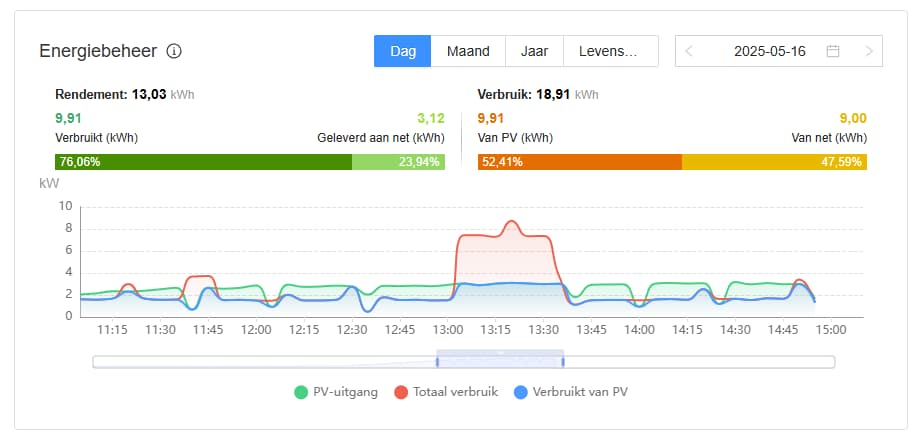I have discovered a new problem with my Teltocharge EVC121000000 (hardware revision 000), firmware version 1.14.5 (17 april) kernel v5.0.7.
Ever since the update of the app to 1.14.1 and upgrade of the firmware to 1.14.5 (Kernel 5.07) even though solar panels are producing 3.2 kW, the charger in ECO mode only uses 1.3 kW (minimum setting of 6A - ECO charging minimum) and there is 1.5kW being fed to the electrical grid. So ECO mode is not using the 1.5kW surplus of solar energy.
Before the update this was nog problem, with this setting minimum was 1.3kW and if more solar energy came available, this went to higher values (1.8kW, 2.4kW) max 3kw (max power output of the solar panels).
I have tried re-installing the app, relinking the charger and rebooting the device (both phone and charger). Tried another cellphone, no help there either.
I have checked this on multiple ocasion and today for an hour now there has been a steady 3.2kW of solar power, and I closely monitored everything with the app and the monitoring website of my solar inverter (photovoltaic (PV) inverter).
Interesting enough in the solar only mode or ECO+ mode, the charger easily goes to 2.8kW charging without problems. So it does work… only not in ECO mode. This makes it seem to me as a software or programming issue and not a hardware issue, espescially since before it worked without problem.
Please let me know if this a known issue or if you require any further information from me?
Hope you can help?
Pixel 7
Android 15
Latest updates
Teltocharge EVC121000000 (hardware revision 000), firmware version 1.14.5 (17 april) kernel v5.0.7.
On your wiki I found the following info:
ECO charging profile
In this profile, the charging process is initiated using maximum available solar energy in combination with grid energy. The user sets the ECO charging minimum value, which determines the minimum charging current. This charging current is first covered by the maximum solar energy available and then supplemented with grid energy.
Example:
ECO charging minimum value set to 10 A
If 5 A (from solar) + 5 A (from grid) = 10 A charging current
If 9 A (from solar) + 1 A (from grid) = 10 A charging current
If 16 A (from solar) + 0 A (from grid) = 16 A charging current
If 0 A (from solar) + 10 A (from grid) = 10 A charging current
but that is not how it works right now… unfortunately


